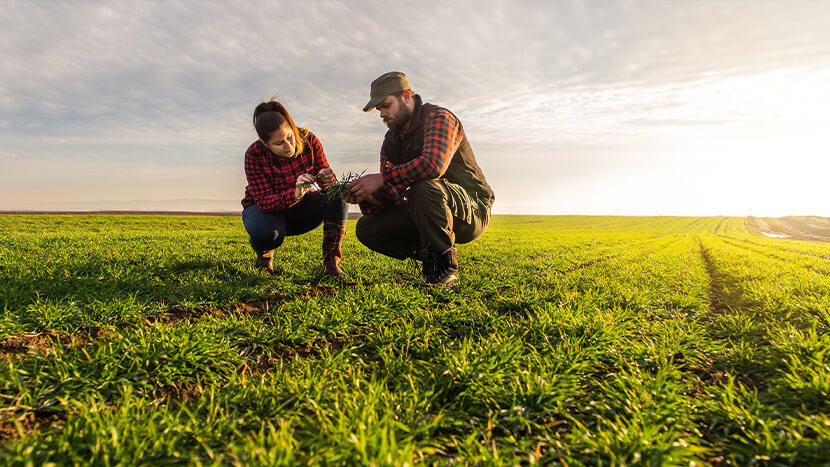The soil is the most important production factor in agriculture. Its protection and the maintenance of its performance and productivity through the promotion of sustainable land management is thus the central socio-political task. The maintenance of soil fertility is an essential foundation for economically successful and resource-saving agriculture.
A look back at the past
Our ancestors already knew that soil fertility is finite. The effects of insufficient or diminishing soil fertility were, for example, shifting cultivation and the overexploitation or exhaustion of arable lands. The consequences of this poor practice and mismanagement were the occurrence of great famines and wars. At the end of the 19th century, the continual removal of nutrients from arable land in Europe was so great in places that fields and forests were barely productive or already infertile. This led to a situation where food production could no longer keep up with the demand for staple foods.
Justus von Liebig, a German chemist and university professor in Gießen and Munich
As one of the first renowned scientists, Justus von Liebig recognised the need to maintain the fertility of soil and formulated his maxim that the soil must be given back what the harvested products take from it. Since this time, agriculture has received significant support from science and technology to guarantee soil fertility in the long term and to preserve the productivity of the soil for foodstuffs.
Extension of crop rotation
Since antiquity, fields have been worked according to a set cultivation system. The change of crops from humus enriching foliage crops (e.g. sugar beet or rape), humus depleting grain crops (e.g. cereals) and the observance of breaks in cultivation plays a vital role. In modern farming, however, crop rotations are not rigid systems of cultivation; they can be adapted flexibly to the demands of each operation. The continual supply of organic substances, lime, reduced or conservative soil cultivation and the extension of crop rotation are vital parameters for the high performance of arable land.
A crop rotation is much more than just the seasonal sequence of agricultural crops in a specific field. Multiple and broad crop rotations can have for example phytopathogenic and weed-controlling effects. In addition, crop rotations make use of positive pre-crop effects on succeeding crops. Moreover they ensure the increased biodiversity of farmland and are proven to improve habitats and locations.
An improved crop rotation prevents nutrient leaching
Intercropping represents such a crop rotation improvement measure and is one of the important agri-environmental measures in modern plant cultivation. Particularly with an increased output of organic substances from the agricultural material cycle, intercropping can contribute significantly to the regeneration of humus. In addition to increasing humus content, intercropping promotes biological activity, binds plant nutrients and has a positive effect on soil and groundwater. The use of intercropping also ensures a more balanced nutrient cycle and can compensate for nutrient surpluses or prevent nutrient leaching on arable land.
The location is also an important factor
In order to make optimal use of the whole spectrum of positive characteristics of intercropping, however, other factors such as intercrop mixing, date of sowing, seed bed preparation and soil tillage must be taken into account. The effect of weather parameters such as amounts of precipitation or temperature variations in the relevant vegetation phase also play a vital role. For ecological and economic reasons, and also for soil and water protection reasons, every farmer is recommended to opt for a form of intercropping that suits his site conditions.
Organic carbon vital for soil fertility
Globally, soils are among the most important carbon stores in our ecosystem. With reduced tilling, soils are able to take in and bind large quantities of atmospheric carbon. Consequently, soils are not only influenced by climate, but in their function as carbon stores, they also affect the climate itself to a large extent. Soils with the highest storage effect are bogs, followed by grassland, forests and arable land. The increasing carbon content of the soil (humus) is visible as rain-resistant crumbs of earth resulting from the year-round activity of micro-organisms.
Soil conservation and soil cultivation
Intercropping also protects against soil erosion, as it provides a longer phase of ground cover, sometimes all year, and thus counteracts the removal of soil particles. Furthermore, the type of soil cultivation is important for the content of organic carbon. The loss of organic carbon in the soil due to ploughing is significantly higher than with ploughless soil tillage. Consequently, reduced soil cultivation also has a favourable impact on the content of organic carbon in the soil.



